When a garbage man was working in an abandoned house and clearing out the trash, he thought that it was going to be just another day at work.
However, from the corner of his eye, the worker noticed something moving in the corner of the house.
Before, he thought it was just a white trash bag, but when he realized that it was moving, he knew it had to be a frightened animal seeking shelter.
Upon further investigation, it turned out that the animal was a curled-up anxious pup.
Help Is Here
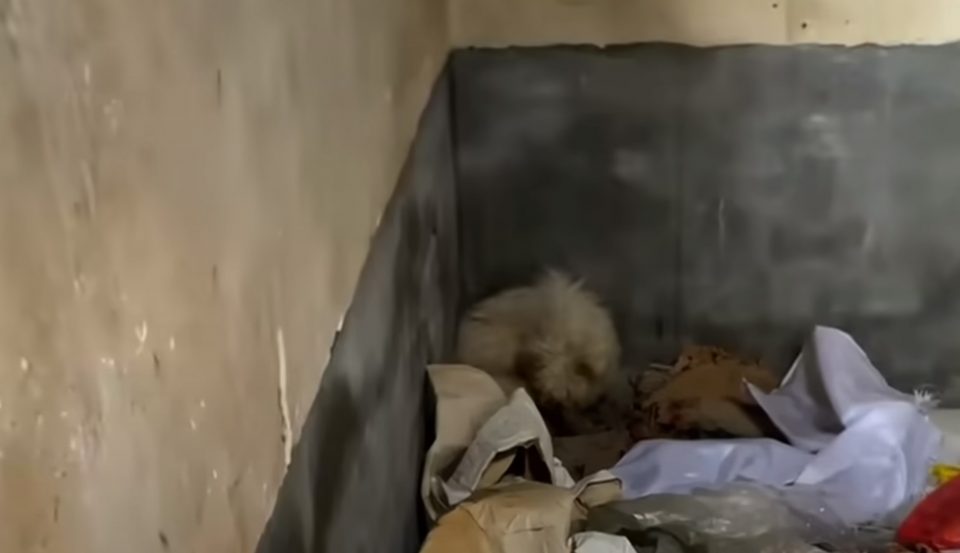
The man didn’t know if the pup was shivering out of fear or if she was just cold because her whole body was wet. But, in the end, it didn’t even matter.
He knew that she was exhausted, hungry, and completely unable to move on her own.
The worker contacted the local shelter and informed them of the situation. While waiting for them to arrive, he looked into the pup’s hopeful eyes and tried to comfort her as much as possible.
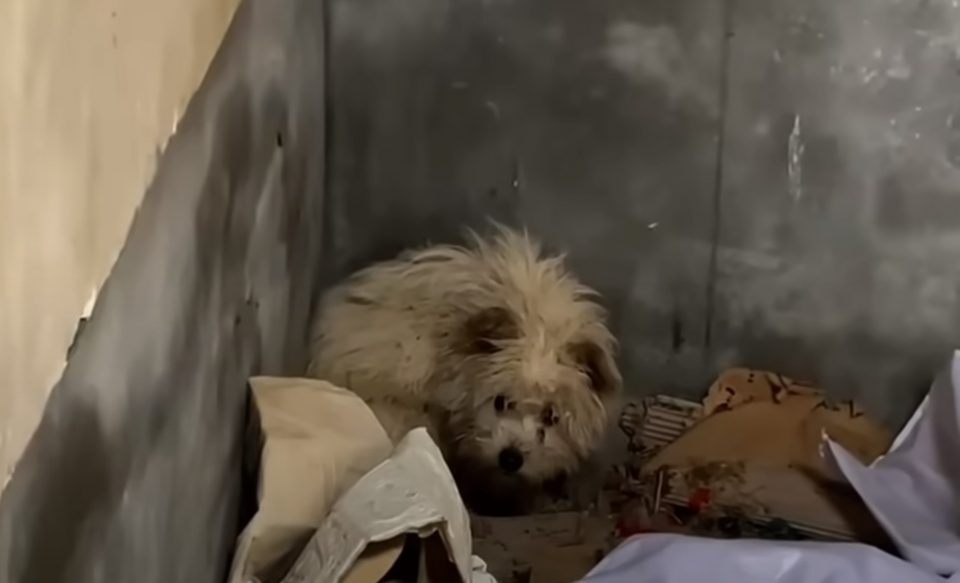
It took the shelter staff a whole hour to arrive at the location and, on their way, they decided to stop at a supermarket and get this starving pup a yummy meal to fill up her tummy.
The staff approached the pup very slowly and carefully, as they did not want to startle her. However, when they offered her the food, she was hesitant to take it, even though she was hungry.
It seemed as though she did not trust all these strangers and was looking around, trying to figure out what was happening.
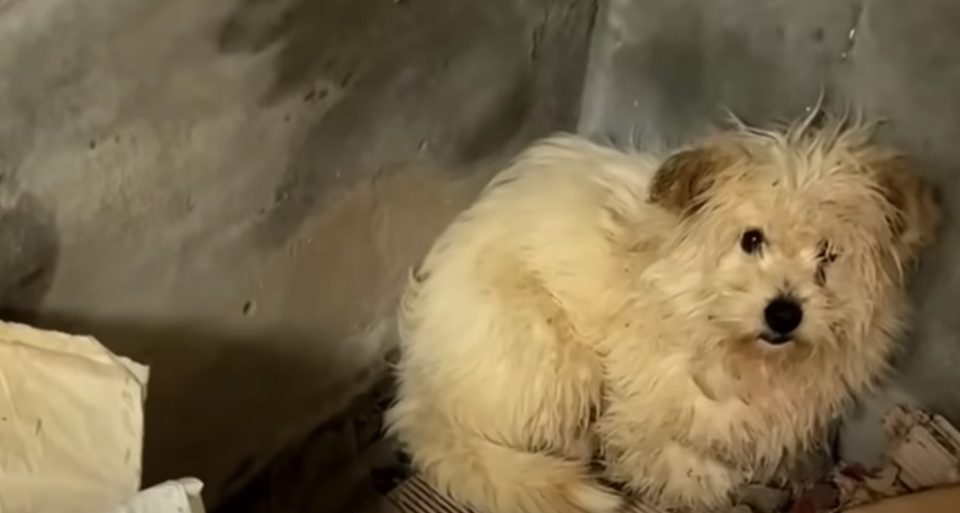
The rescue staff tried to talk to her in a calm and gentle voice, hoping that this would help them gain her trust, but the pup was simply too afraid.
They decided to take a different approach, which included leaving the food in front of the dog and leaving the room, thinking that it would help her relax.
It worked!
As soon as she saw them exit the room, the pup immediately rushed toward the food and ate every last bit of it.
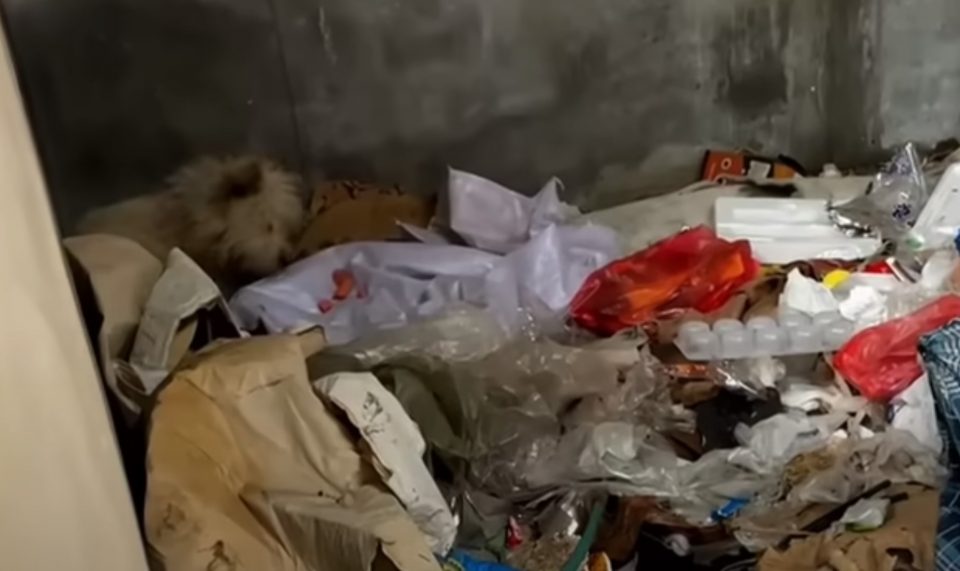
After she finished, the rescuers entered the room again, hoping that this time, the pup would eat from their hand, but they still didn’t gain her trust.
She continued to turn away from them, trying to make herself as small as possible.
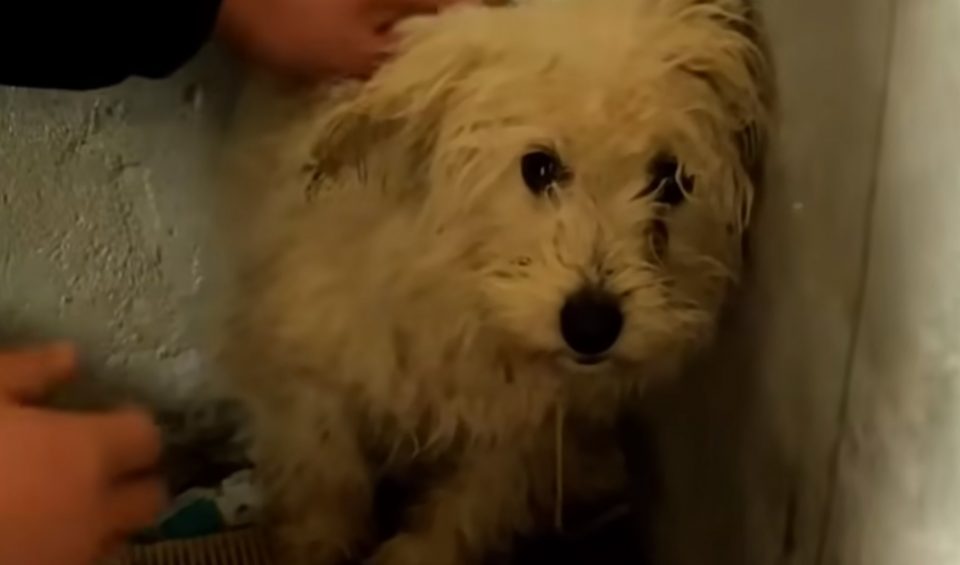
But, the rescuers did not give up!
After a while, the pup finally lowered her guard and allowed the hoomans to pick her up and take her to the car.
New Chapter In Life
The rescue staff immediately took the pup to the nearest vet hospital so that she could receive a thorough checkup.
The doctor discovered that she had two smaller wounds on the side of both of her legs. Luckily, they were not deep and will go away in no time with some ointment,
The pup then received a much-needed bath and a little haircut, making her look completely unrecognizable.
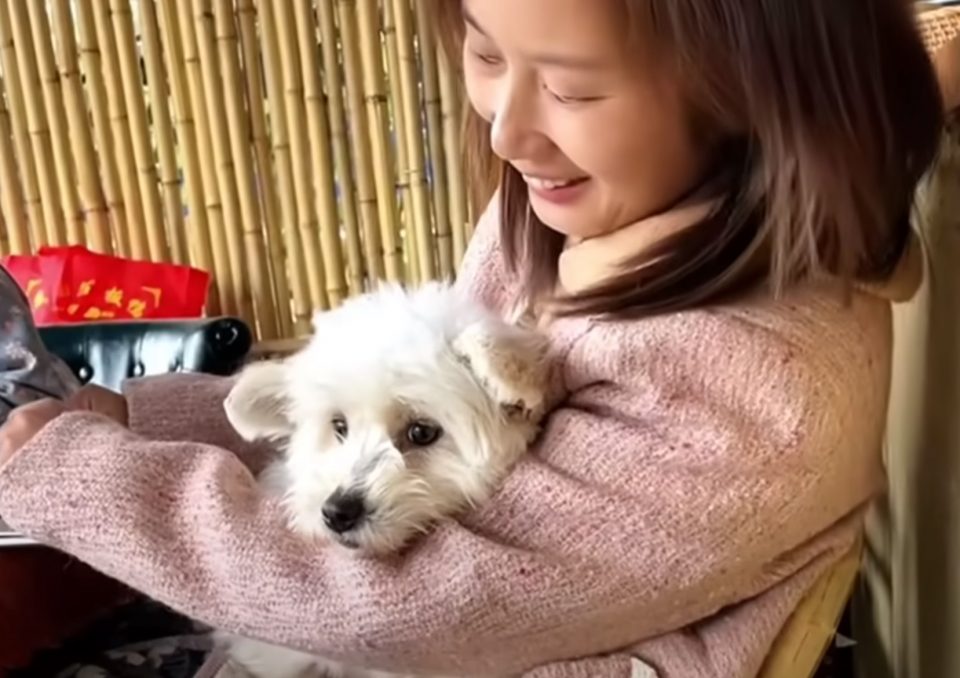
The pup was able to check out of the hospital the same day and go home with her rescuers who decided to take her in.
Again, she was a bit hesitant when she arrived since everything was so new to her. She kept on hiding in corners and refusing to eat.
Luckily, thanks to her determined rescuers, the pup started coming out of her shell and understanding that there was nothing to be afraid of.
In no time, she started running around and playing with other furry friends, living the best life ever!
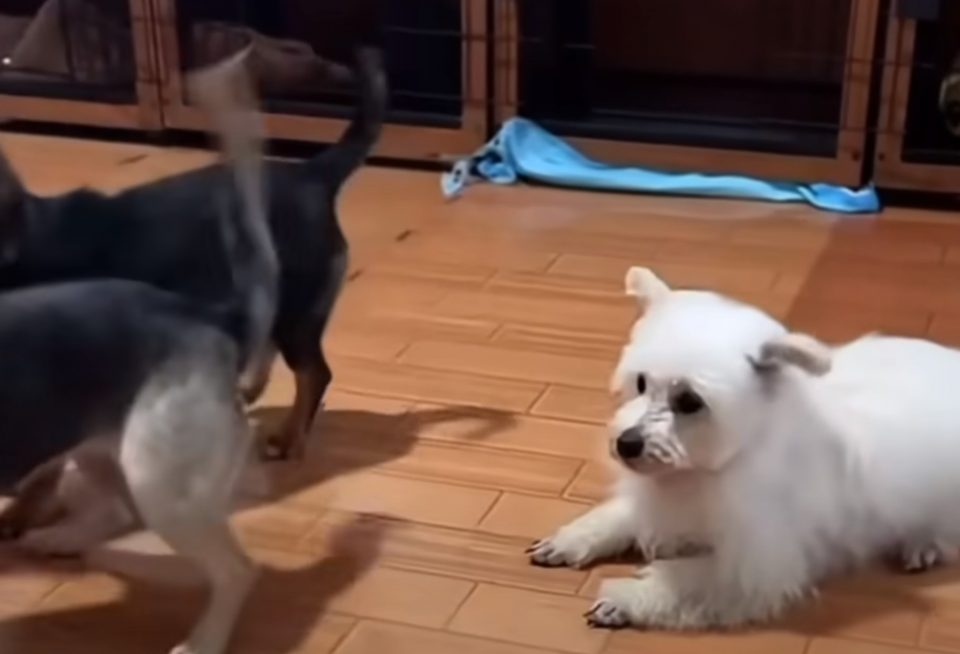
Going from an anxious pup to one who constantly has zoomies wasn’t easy. But, thanks to the incredible hoomans who did not give up on her, this pup is finally able to be happy!
If you’ve ever noticed your furry friend constantly panting, you might be wondering what’s behind this behavior. Dogs pant for various reasons, and understanding why they do it can provide valuable insights into their well-being. From excitement to cooling down, panting is a natural way for dogs to regulate their body temperature. As a seasoned dog owner, it’s essential to decode the messages behind your dog’s panting habits to ensure they’re happy and healthy.
As you observe your canine companion panting during different activities, it’s crucial to recognize the signals they’re sending. Whether it’s after a play session or a long walk, panting is your dog’s way of communicating with you. By paying attention to the context and frequency of their panting, you can gain a deeper understanding of what’s going on in your dog’s world. So, next time you see your pup panting away, remember, there’s more to it than just a wagging tail.
Understanding Canine Panting: Normal vs. Excessive
When Panting Is Considered Normal
Panting is your dog’s way of cooling down, especially when they’re warm or after physical activity. It helps regulate their body temperature. Normal panting should be occasional, like after a walk or when excited. You may notice light to moderate panting, and once they cool down, it should stop.
Signs of Excessive Panting in Dogs
Excessive panting in dogs can signal an underlying issue. If your dog is panting heavily without any apparent reason, even in cool environments, it might indicate pain, stress, or a medical problem. Other signs like discolored gums, drooling, or restlessness can accompany excessive panting, indicating a need for attention from a vet.
Common Reasons Behind Frequent Dog Panting
When it comes to your furry friend’s panting, understanding the common triggers can help you ensure they stay healthy and happy. Here are the key reasons behind why your dog might be panting more than usual.
Heat and Humidity’s Effect on Dogs
Hot weather and high humidity can make your dog pant excessively as they try to cool down. Dogs regulate their body temperature through panting, so it’s normal for them to pant more in the heat. Keep your pup hydrated and provide a shaded area to help them stay comfortable.
Exercise and Excitement Triggers
Physical activity and excitement can also lead to increased panting in dogs. If your dog has been playing vigorously or is overly excited, they may pant heavily to catch their breath. Monitor their activity levels and ensure they have enough rest to prevent exhaustion.
The Role of Breed and Age in Panting
Different dog breeds and ages pant at varying rates. Brachycephalic breeds like Bulldogs may pant more due to their shortened airways, while older dogs might pant heavier due to decreased stamina. Know your dog’s breed tendencies and adjust their exercise and environmental conditions accordingly to keep them content.
Understanding the reasons behind your dog’s panting helps you provide the right care and attention they need. By being aware of these common triggers, you can ensure your canine companion stays healthy and happy.
Health Issues Linked to Excessive Panting
Respiratory and Cardiovascular Conditions
If your dog is panting excessively, it could be a sign of underlying respiratory or cardiovascular issues. Conditions such as heartworm disease, pneumonia, or bronchitis can cause difficulty breathing, leading to increased panting. It’s essential to consult your vet if you notice persistent or abnormal panting patterns in your furry friend.
Pain and Discomfort as Causes for Panting
Dogs may pant excessively when they are in pain or discomfort. Issues like arthritis, injuries, or internal pain can trigger heavy panting as a way for dogs to communicate their distress. Monitoring your dog’s behavior and seeking veterinary attention for any signs of pain-related panting is crucial for their well-being.
Anxiety and Stress-Related Panting
Anxiety and stress can also manifest in excessive panting in dogs. Situations like separation anxiety, fear of loud noises, or traumatic experiences can cause heightened stress levels, leading to increased panting episodes. Providing a safe and calming environment for your dog, along with possible behavioral training or medications prescribed by a vet, can help alleviate stress-induced panting.
When to Consult a Veterinarian
Monitoring Panting Patterns and Behaviors
If your dog’s panting changes significantly in frequency, duration, or intensity, it’s essential to monitor these patterns. Pay attention if the panting occurs out of context, such as when your dog is resting in a cool environment. Additionally, observe for other unusual behaviors like restlessness, lethargy, or loss of appetite that may accompany excessive panting.
Diagnostic Tests for Panting Dogs
When your dog displays abnormal panting coupled with concerning symptoms, consulting a veterinarian for diagnostic tests is advisable. These tests may include blood work, X-rays, ultrasounds, or even specialized tests based on the suspected underlying cause of the excessive panting. Veterinary professionals can interpret these results to determine the exact health issue causing your dog’s excessive panting and provide appropriate treatment.
Preventing and Managing Excessive Panting
Creating a Cool And Comfortable Environment
Ensure your dog has access to a cool and well-ventilated space, especially during hot and humid weather, to prevent excessive panting. Provide shade and plenty of fresh water to help them stay hydrated and regulate their body temperature.
Managing Weight And Diet For Optimal Health
Maintaining your dog’s weight within a healthy range can reduce the strain on their respiratory system and decrease excessive panting. Consult your vet to create a balanced diet plan tailored to your dog’s specific needs to support their overall health and well-being.
Importance Of Regular Exercise And Vet Visits
Regular exercise helps improve your dog’s cardiovascular fitness and overall health, reducing the likelihood of excessive panting. Additionally, scheduled vet visits allow early detection of any health issues that could contribute to abnormal panting patterns, ensuring timely intervention and treatment.
Conclusion
Your furry friend’s constant panting might seem concerning, but it’s their way of keeping cool and expressing themselves. Understanding the reasons behind their panting, whether it’s due to heat, excitement, or potential health issues, is key to ensuring their well-being. Remember, monitoring any changes in their panting patterns and seeking professional help when needed are crucial steps in caring for your pup. By creating a comfortable environment, maintaining a healthy lifestyle, and staying proactive with vet check-ups, you can help your dog stay happy and healthy. So, next time you see your dog panting, just give them some extra love and attention – they’ll appreciate it more than you know.
Frequently Asked Questions
Why do dogs pant?
Dogs pant to regulate body temperature since they don’t sweat like humans. Panting also helps them communicate when they’re feeling excited or stressed.
What are common reasons for dog panting?
Common reasons for dog panting include heat, humidity, exercise, excitement, breed differences, and age-related factors.
What health issues can cause excessive panting in dogs?
Health issues linked to excessive panting in dogs include respiratory and cardiovascular conditions, pain from issues like arthritis or injuries, and stress-related panting due to anxiety.
When should I seek veterinary attention for my dog’s panting?
You should seek veterinary attention if your dog’s panting changes significantly in frequency, duration, or intensity, or if you notice any abnormal patterns.
What diagnostic tests might be recommended for excessive panting in dogs?
Diagnostic tests that may be recommended for excessive panting in dogs include blood work, X-rays, ultrasounds, and specialized tests to identify the underlying cause.
How can I prevent and manage excessive panting in my dog?
To prevent and manage excessive panting in your dog, create a cool environment, manage weight and diet, ensure regular exercise, and schedule vet visits for early detection of health issues.
[no_toc]

Hey there, I’m Janet Brooks, a dog-loving student from California. I’m all about helping pups in need, especially those without homes. Me and my awesome friends work together to give shelter and love to stray dogs. Oh, and I also write blogs about dogs to share helpful info.